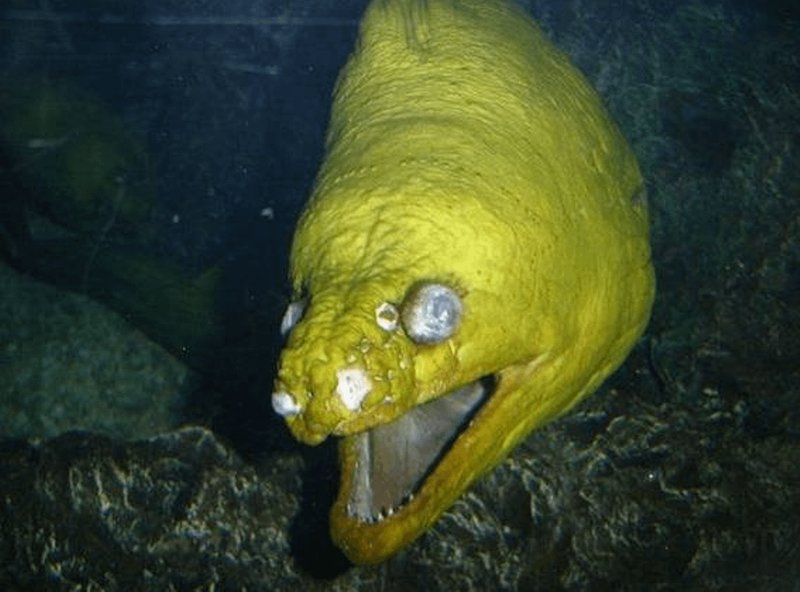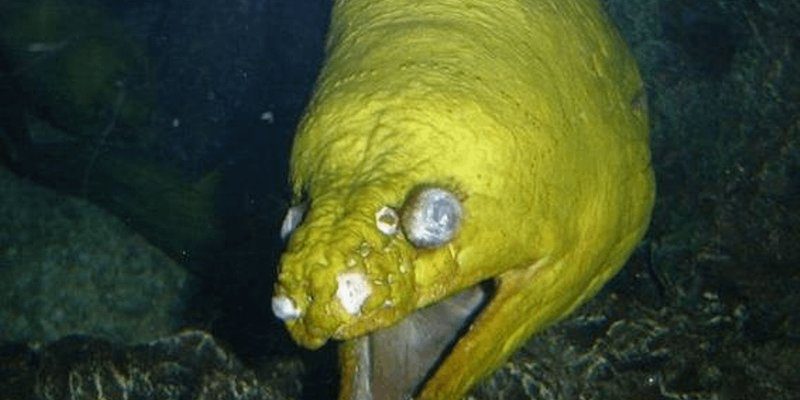
Moray eels have captured the imagination of many marine enthusiasts, thanks to their unique looks and secretive nature. Picture this: a sleek body that can twist and turn with surprising agility, often peeking out from the rocky crevices of reefs. While they may look intimidating with their toothy grin, there’s more to these creatures than meets the eye. It’s crucial to understand their behavior and habitat if you’re thinking about getting close to them, whether you’re snorkeling, diving, or just curious about these ocean dwellers.
So, can humans interact safely with the moray eel? The answer isn’t as straightforward as you might hope. There are definitely ways to do it responsibly, but it’s essential to know the right approach. Let’s explore the fascinating world of moray eels and how we can safely share their underwater home.
Understanding Moray Eels
Moray eels belong to a group called Muraenidae, which includes over 200 species. They can be found in warm waters around the world, often hiding in crevices and caves on coral reefs. Their bodies are long and snake-like, enabling them to move swiftly through the water. Some people describe them as the “guardians” of their rocky homes, peeking out to watch as the reef’s life unfolds.
What makes moray eels particularly intriguing is their coloration. Many species have beautiful patterns or vibrant hues that help them blend in with their surroundings. For example, the green moray eel is famous for its striking greenish-yellow pigment. This camouflage is crucial, as it helps them avoid detection from predators and prey alike.
Despite their intimidating appearance, most moray eels aren’t aggressive. However, they’re territorial and can bite if they feel threatened. This is where understanding their behavior becomes crucial for safe interaction. Learning how to respect their space and observe them from a distance is key to a positive experience.
Behavior and Habitat
Let’s talk about where moray eels like to hang out. They prefer rocky areas, coral reefs, and sometimes even sandy bottoms where they can hide in the safety of a crevice. This love for hiding is part of their hunting strategy. They often ambush their prey, which usually includes smaller fish and crustaceans.
Moray eels are nocturnal hunters, meaning they’re most active at night. During the day, you might find them lounging in their homes, poking their heads out just enough to keep an eye on the surroundings. Knowing this can help when considering a dive or snorkel trip; early morning or late afternoon could be great times for an encounter.
But here’s the thing: when humans enter their space, it’s best to do so with caution. They don’t approach like friendly dolphins; instead, they stay tucked away. If you’re diving, the golden rule is to keep your distance and respect their territory. You wouldn’t barge into someone’s home uninvited, right?
Safe Interaction Techniques
Now, if you’re planning to interact with moray eels, being smart about it is crucial. Here are some tips for a safer experience:
- Observe from a distance: Use a camera with a zoom lens or binoculars if you’re on a boat. Getting too close can stress them out.
- Avoid sudden movements: Humans can be clumsy underwater. Move slowly and smoothly to avoid startling them.
- Stick to your dive plan: If you’re with a group or diving instructor, follow their lead. They’ll know how to navigate safely around marine life.
- Don’t feed them: While it might be tempting to offer a little snack, feeding wildlife is generally a bad idea. It can change their natural behaviors and lead to dangerous reliance on humans.
Following these tips can help ensure that both you and the moray eel have a safe encounter. Remember, it’s all about respecting their world and understanding their nature.
Common Misconceptions
It’s easy to let fear guide our perceptions, especially with creatures like moray eels. One common misconception is that they are aggressive predators seeking to attack divers. In reality, moray eels are more likely to flee than fight if they feel threatened. They bite only when they believe their home is being invaded.
Another myth is that moray eels have poor eyesight and rely solely on their sense of smell. While it’s true they have excellent olfactory senses, they also see quite well, especially in dimly lit underwater environments. They can recognize familiar shapes and colors, so they’re more aware of their surroundings than many people think.
Understanding these misconceptions can help ease fears and encourage a deeper appreciation for these creatures. They play an essential role in the marine ecosystem, and it’s important to recognize their value.
Comparing Moray Eels to Other Marine Life
When considering interactions with marine animals, it’s useful to compare moray eels to other creatures like stingrays or even dolphins. For example, stingrays are often gentle and allow people to swim close if approached respectfully. Dolphins, while playful, can still be unpredictable and require careful handling around them.
In contrast, moray eels might not be as social or engaging as dolphins, but their quiet presence adds a layer of intrigue to coral reefs. While they don’t seek interaction, encountering one can still be an awe-inspiring experience.
Overall, understanding these differences can help you appreciate each species’ unique characteristics and how best to interact with them safely.
So, can humans interact safely with moray eels? The answer, in short, is yes—but with the right knowledge and respect. Moray eels are fascinating creatures that play important roles in their ecosystems. By understanding their behavior and habitat, you can appreciate these beautiful eels while keeping both yourself and the eels safe.
Whether you’re a seasoned diver or just curious about the marine world, the key takeaway is respect. Observing from a distance, understanding their nature, and following safe interaction practices will enrich your experience without compromising their wellbeing. So the next time you find yourself near a reef, take a moment to appreciate the hidden lives of moray eels and the incredible underwater world they inhabit.

